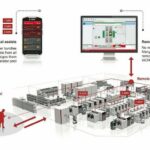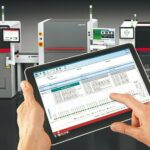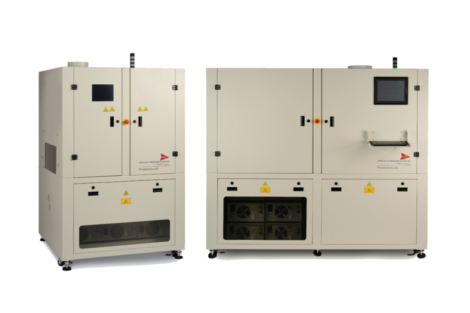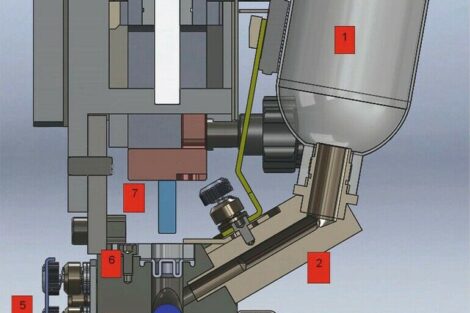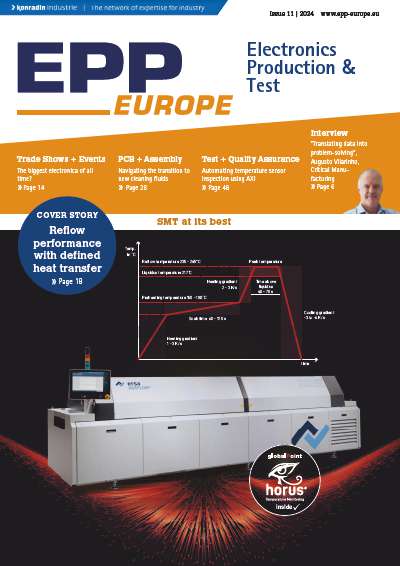As customer requirements steadily increase and skilled labour shortages continue, manufacturers must embrace digitalization if they want to remain competitive and resilient. Despite this, a large number of companies still believe the digital transformation ends with machines. In many factories, administrative processes such as staff assignments, material flow, reporting and maintenance and repairs, continue to be planned and controlled manually. The tendency to rigidly assign employees to one particular line or machine continues to prevail, and the vast majority of manuals, checklists, maintenance plans and service reports are still in paper format. As a result, line staff are not deployed according to their respective qualifications nor to task priorities, and service technicians usually spend more time searching for information than actually fixing a problem.
Keeping the line running
To ensure optimal Overall Equipment Effectiveness (OEE), the most important task for operations staff is to keep the line running. All processes must be properly coordinated and run without interruptions. Materials must be delivered and refilled on time, problems must be resolved quickly, and maintenance work must be performed without disrupting operations.
ASMPT’s WORKS Smart Shopfloor Management Suite features an array of line operation functions to help managers and operators on the shop floor to control, optimize and automate eight workflows: Planning, Programming, Integration, Optimization, Monitoring, Operations, Preparations, and Logistics. The software orchestrates all the necessary variables such as personnel, equipment, materials, and processes to ensure they interact seamlessly.
The solution provides information in the right place at the right time and deploys employees across all lines based on their individual qualifications. Instead of being rigidly assigned to specific lines, specialists are organized in smart operator pools and deployed via smart devices where they are most needed in accordance with their qualifications and task priorities. The system collects, analyzes and consolidates the necessary data from both the machines and the monitoring software. For predictable tasks such as material replenishment, consumption is automatically anticipated, and the software organizes deployment based on the shortest possible travel distance. Another feature that saves many miles of physical travel is the Remote Cockpit, a central console solution that makes it possible to change multiple machine settings from a single location. If a quality assurance system reports a potentially defective board, this convenient cockpit solution means it can be visually inspected remotely.
Materials always on hand
Material logistics managers must ensure that materials are always on hand in the right place, at the right time and in the right quantities. The software suite offers them an innovative solution that divides the flow of materials into freely definable time slots. Based on planned and actual material consumption as well as stock on site, the software continuously updates demand on the line. Based on this information, it automatically issues material requests to the central and local storage sites along with time-based transportation orders. This eliminates the need for manual reorders with all their potential errors, as well as preventing machine downtime, and eliminating the need for emergency stocks or last-second operator deployments on the line.
Quality assurance
Since solder paste printing is essential for error-free production, quality assurance processes carried out by operators in this area are of the utmost importance. WORKS offers a unique solution for this. With expert software that employs both ‘big data’ and AI, SPI systems – both those manufactured by ASMPT as well as compatible third-party systems – can now be integrated into the world’s first self-learning inline expert system for electronics production. The real-time software analyzes all current and historical inspection data and learns from each individual print. Based on this information, the entire printing process can be controlled and optimized automatically. The software even takes data from third-party systems, such as end-of-line AOI, into account. It processes large volumes of data in far less time than a human operator ever could, and it overlooks nothing. In this way, it simplifies quality assurance processes and improves the line’s overall productivity.
Keeping an eye on objectives
For production and factory managers, information is the key to success. It is this information that WORKS automates, prioritizes, and presents in an easy-to-understand manner. It determines the line status and all key production performance indicators in real time and displays them as needed – in target-vs-actual numbers, as graphics, or as target-vs-actual comparisons with definable target values. It allows managers to see at a single glance what is working correctly on the factory floor and what isn’t. It also provides technicians and process engineers with important detailed information for their analyses and informs production employees about order progress, target achievement and potential improvements by means of overhead monitors.
Compiling and supplying information
Diligent maintenance and rapid troubleshooting are important prerequisites for a smooth production flow. To perform their job properly, service technicians require quick and easy digital access to information – ideally on their mobile device – even if the information they need comes from multiple sources spread over many systems. To achieve this, ASMPT offers intelligent IoT applications and flexible, scalable licence models to increase the performance of the entire SMT factory across equipment suppliers and divisions. This functions as a central and manufacturer-independent solution for predictive maintenance of all machines – even outside of SMT production – or as an AI- and natural language processing (NLP)-supported virtual assistant on mobile devices.
Organizing maintenance operations
A maintenance manager must keep track of the entire production inventory, reconcile maintenance operations with production planning and maintain adequate capacities without building up a service backlog. Achieving all this is very demanding.
The smart solution to this is called Factory Equipment Center, a scalable IoT-based application for enterprise-wide asset and maintenance management with a central maintenance calendar. The planning, control, support, execution and documentation of maintenance and service operations can be carried out centrally for all equipment, including machines from other manufacturers and non-SMT production equipment.
The system keeps an eye on production scheduling and coordination, making it possible to assign tasks automatically and without errors. Factory Equipment Center also provides operators with maintenance instructions and checklists at the push of a button. It tracks and monitors sensor data and even automates time-consuming manual reporting.
Rapid troubleshooting
With the AI-supported Virtual Assist, service technicians get an all-in-one manual they can carry in their pocket as the perfect companion to their everyday tasks. Upon request, it provides all the technical information needed for any machine. Thanks to its natural language processing (NLP) and AI, they can verbally query a system – regardless of source or machine; the program automatically adapts its search algorithms to the target medium. Even queries from English-language sources entered in German produce results quickly and directly. And thanks to machine learning, the system adds knowledge with each query and improves all the time. Since the SaaS solution is not limited to ASMPT equipment, any number of assets from different vendors can be added. Knowledge thus remains in the company even when employees leave. Virtual Assist also makes onboarding new people a lot easier.
More efficiency, happier employees
Today, software is as important in ASMPT’s product portfolio as its equipment for printing, inspection and SMT assembly. More complex tasks and new technologies require the use of process-automation and optimization software. By utilizing it, companies can benefit from highly efficient personnel deployment, better productivity and superior quality, while employees get support that makes their work easier, and less stressful. Thanks to big data and AI, the software accumulates knowledge that stays in-house with each process – making the business more competitive and resilient.
Modular design for optimal ROI
As with ASMPT’s hardware solutions, the modular Open Automation concept forms the central component of the company’s software strategy. It breaks with dependencies on proprietary systems as well as with rigid processes and restrictions. Instead, electronics manufacturers can take a personalized, modular path to the integrated smart factory while still ensuring the best ROI.
facts-on-open-automation.asm-smt-events




